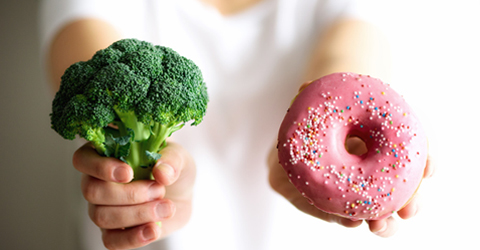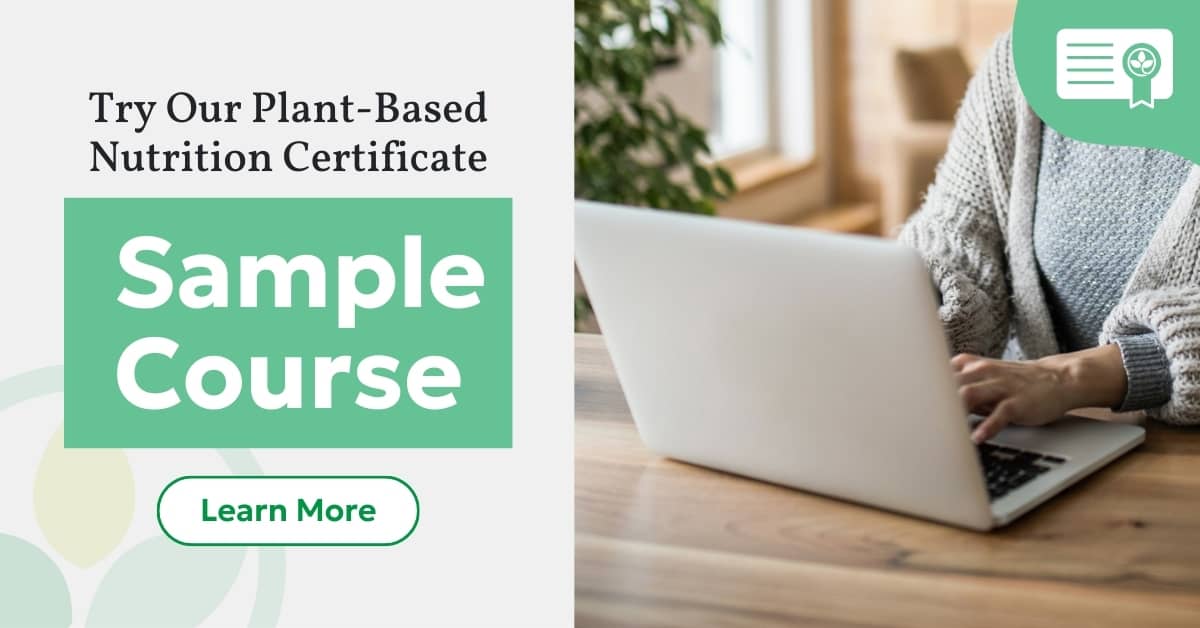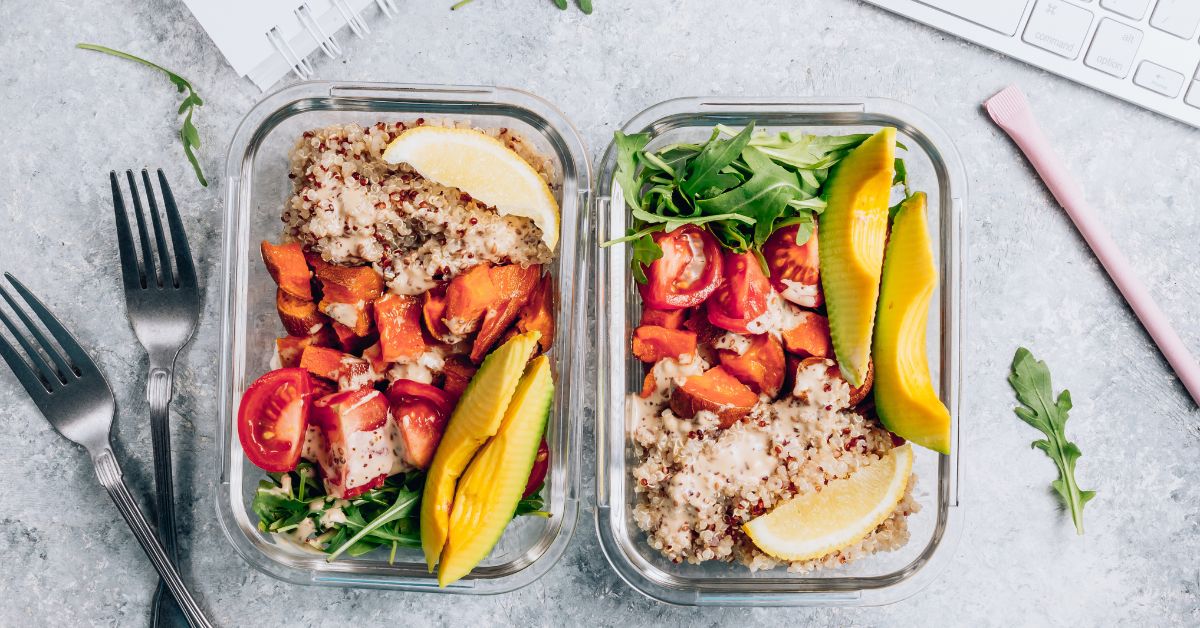
From Junk Food to Plant-Based Eating: How I Made the Switch in 5 Steps
My relationship with nutrition and fitness is forever changed. I used to think eating nutritious food was a chore. I was convinced that my sporadic vegetarianism offset the cheese curls and cupcakes. My smart vegan nephew told me stories about the food I was eating, but I didn’t want to listen. I didn’t want to hear about the toxins and chemicals, and I was steadfast in believing that dairy cows and free range chickens lived happy lives. All that began to change when I committed to a trusted mentor’s 21 Day Vegan Challenge. The lifestyle stuck, and with it came a yearning to know much more. I now search for delicious food that is in harmony with nature and our environment. What seemed impossible is now a compassionate, informed way of life.
5 steps to keep in mind if you’re interested in making the switch:
1. Learn the difference between vegan and whole food, plant-based (WFPB).
Vegan foods are plant-based, but they’re not necessarily whole food. The difference is in how your food is prepared and how much it changes in form by the time it gets to your plate.
For example, an organic sweet potato from a farmers’ market can be baked with a dash of organic maple syrup. Or, it can be peeled, grated, partially cooked, combined with oil, salt, sugar, and preservatives, then pressed into tater tots to be fried in more oil—and probably sprinkled with more salt when they’re done. In both instances, the meal consists of a sweet potato. Both are plant-based, but only the fresh sweet potato is being consumed as nature designed: fat free and full of fiber, antioxidants, vitamins, and minerals. In the tater tots, much of those nutrients have been lost through heat and mechanical processing, then further compromised by the addition of other highly refined ingredients and chemicals.
2. Start with what you already know you like.
We all have favorite foods that we don’t think of as vegan or plant-based. Do you like avocados, tomatoes, or onions? Use them as separate toppings or combine them to make guacamole served with tortilla chips. Do you enjoy peanut butter? Stock up on natural peanut butter, raw pumpkin seeds, and whole wheat pitas. Organic, vegan soups line supermarket aisles. Hummus is everywhere, even in pharmacy food sections and gas station quick marts, and it’s easy to make your own without oil. Fruits and vegetables can be grown in your own garden and picked up at farmers’ markets. A dish of frozen bananas can be a wonderful treat. Replace dairy milk with delicious soy, almond, coconut, or other plant-based milks. Just the items mentioned here can be breakfast, lunch, dinner, and snacks as week 1 of your plant-based menu.
I planned easy, repetitive meals, I learned about moving from vegan to WFPB, and I immersed myself in the nutrition program.
The key to avoiding the “what will I eat?” panic is to focus on foods that have ingredients that you can understand and pronounce. Keep an eye on added oil or sugar. For my first week, I kept it simple. I stocked up on everything listed above. I had two breakfast items that I chose from, two lunch items, alternating dinner items, and treats. I would (and still do) make a giant salad with my favorite lettuce and veggie add-ins, use fresh lime or lemon, salt and pepper, pumpkin seeds or walnuts so that I always have something inviting on hand. Keep it simple with soups, oatmeal, nut butters, fruit, breads, and vegetables.
3. Be prepared for social dining.
As vegan diets have become more popular, non-vegan friends, family, and restaurants are more accommodating than ever, especially if you approach them politely about meeting your needs. However, there will inevitably be situations where your needs aren’t considered, from holiday parties to work lunches to highway rest areas where the vending machines are filled with junk—all of which may tempt you to make bad choices when hunger has compromised your willpower. Be prepared. Bring your own smoothie, nut butter on a bagel, crackers and hummus, veggies and a dip, mixed nuts, dried fruit, etc. Having your own snack can go a long way when you’re facing food temptations.
4. Give yourself long enough to feel the benefits.
The longer you hang in there, the more benefits your body will experience. In the meantime, remembering the benefits your new diet has for the rest of the planet may strengthen your resolve. I became a vegan because I care about animals and want to limit their suffering as much as possible. When my plant-based commitment is faltering, I picture the source of the food instead of the meal in front of me. I think about the factory farms, the cages, the slaughterhouses, and all the ways that animals are abused for the sake of foods we don’t even need. When I consider the consequences not just for myself, but for animal welfare, I lose my appetite for those foods.
5. Enjoy the knowledge and serenity of the long term progress.
When I started the 21 Day Vegan Challenge, I had no idea where it would lead me, but I ultimately enrolled in the T. Colin Campbell Center for Nutrition Studies and eCornell Plant-Based Nutrition Certificate program. There, I enhanced my knowledge of the WFPB diet, government food policy, animal agriculture, the environment, individual health and fitness, and a global view of this movement. I learned from experts in the fields of science and medicine, healing, farming, cooking, nutrition, and policy.
This comprehensive curriculum gave me the knowledge that my new habits are having a positive impact. I know that by eating WFPB every day, I save lives and spare animals from suffering. I conserve water. I reduce pollution, including greenhouse gases that lead to climate change. What I eat is in tune with nature. It makes me a stronger, healthier person. A wise friend suggested that getting rid of the toxins in our food also helps us get rid of the toxins in our lives, and she was correct. This is a peace and happiness, a true serenity, that I never expected.
On the first day of my 21 Day Vegan Challenge, I had the flash of hope that I would stick with it after the challenge. I planned easy, repetitive meals, I learned about moving from vegan to WFPB, and I immersed myself in the nutrition program. What once seemed impossible soon became my new reality. I am a healthy, happy, whole food, plant-based woman about 80% of the time, and a bit of a vegan junk foodie the other 20% of the time. I’m still a work in progress, happy progress, and hoping to spread this kind of happiness to others.
You Might Also Like
Copyright 2025 Center for Nutrition Studies. All rights reserved.
Deepen Your Knowledge With Our
Plant-Based Nutrition
Certificate
Plant-Based Nutrition Certificate
- 23,000+ students
- 100% online, learn at your own pace
- No prerequisites
- Continuing education credits









